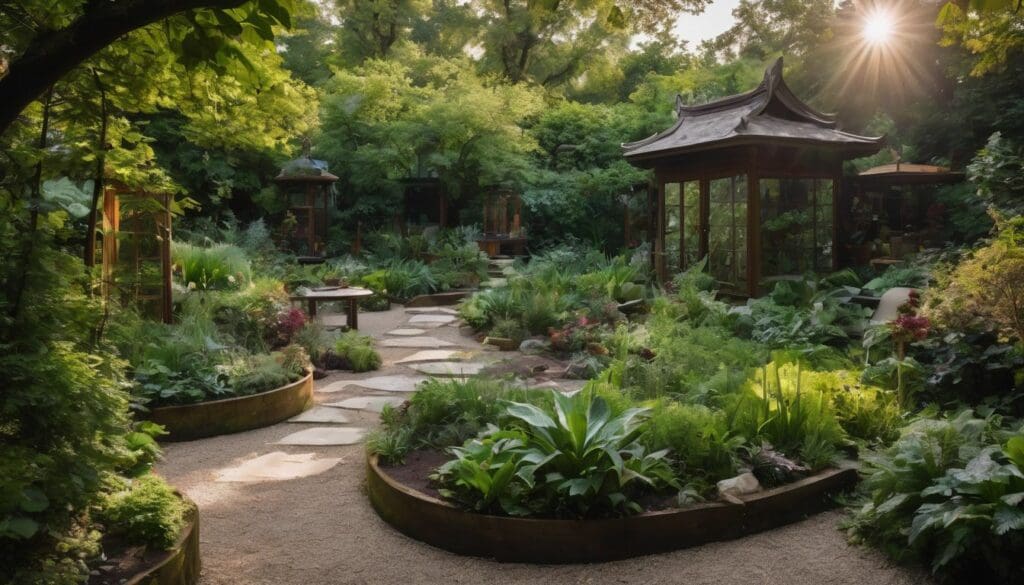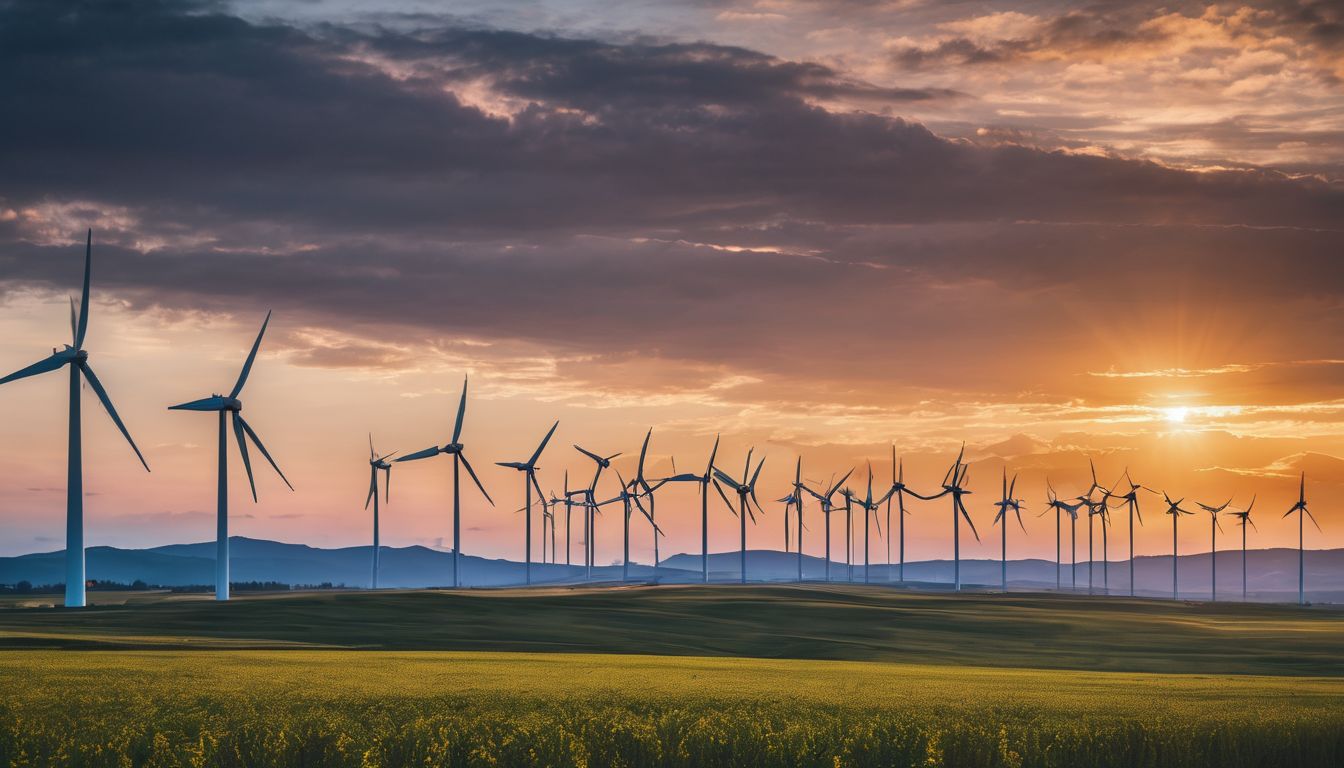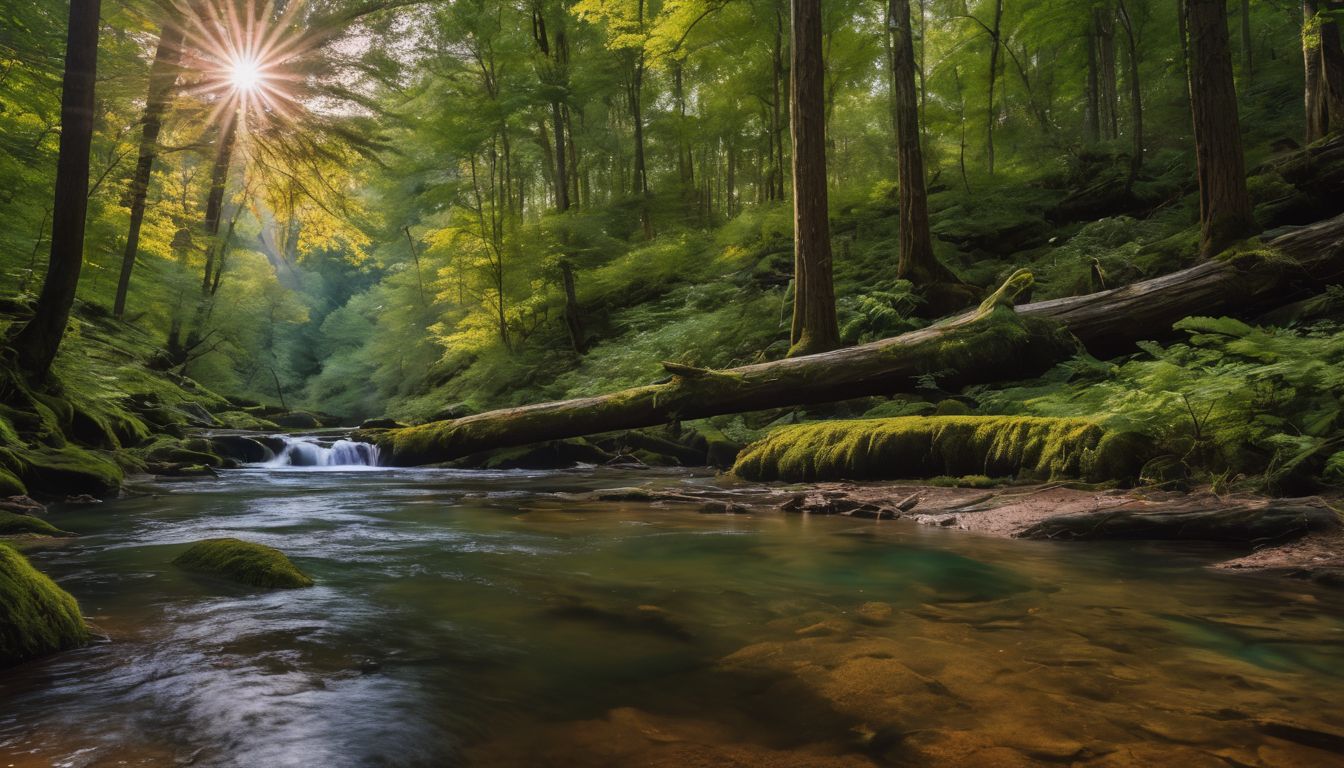In our collective journey towards safeguarding the world we cherish, the realm of art is no stranger to the pressing environmental concerns that touch all corners of our lives. Many of us in this vibrant community have been wrestling with a pivotal question: How can we illuminate the wonders of artistic expression without casting a shadow on Mother Earth? The wake-up call was clear when a 2018 report threw into stark relief that almost one-fifth of an exhibition’s carbon footprint might be attributed merely to transport.
Our blog has blossomed into a treasure trove of wisdom and actionable insights for curating art exhibitions with consideration and care for our natural world. With each thoughtful step and careful brushstroke, we are committed to crafting experiences not only steeped in creativity but also infused with conscious responsibility.
Together, let’s sketch out a future where art thrives in harmony with nature’s exquisite tapestry.
Key Takeaways
- Utilise recycled or recyclable materials like paper and metal, along with eco-friendly art supplies such as organic paints, for environmentally responsible artwork.
- Implement energy – saving lighting and renewable energy sources in your art studio to reduce the carbon footprint of art exhibitions.
- Promote sustainability by collaborating with other artists and organisations that focus on conservation and environmental themes within their work.
- Consider virtual art exhibitions to widen reach while conserving resources; engage in sustainable platforms like green art fairs to amplify environmental awareness.
- Support ethical sourcing from suppliers committed to eco – friendly manufacturing processes; this ensures sustainability extends throughout the entire artistic supply chain.
Understanding Sustainable Art
“Sustainable art is a movement that focuses on using environmentally friendly materials and processes in creating art. It has its roots in the environmental and conservation movements of the 1960s, and supports the use of renewable resources and recycled or recyclable materials.”.
A Brief History of Sustainable Art
Artists have long been inspired by nature, often using their work to showcase the beauty of our planet. This appreciation blossomed into a commitment to preserve the environment, giving rise to sustainable art practices.
In past decades, eco-conscious artists began experimenting with recycled materials and renewable resources. They started creating pieces that not only spoke about conservation but also embodied these principles in every brush stroke.
We’ve seen remarkable innovations in this field over time, from using earth-friendly exhibition design to embracing experiential design that minimises waste. The movement gained momentum as more creators joined hands for this worthy cause.
Art fairs dedicated to environmentally friendly art supplies and green exhibition planning are becoming increasingly popular. Our role in this ongoing story is pivotal – we support and elevate artistic sustainability through responsible display choices and environmental awareness integration into every aspect of our craft.
Sustainable Materials in Art
After understanding the history of sustainable art, let’s delve into the use of sustainable materials in art. This is crucial for environmentally conscious individuals seeking to support conservation and environmental causes. Here are some key aspects to consider:
- Utilising recycled or recyclable materials for artworks, such as paper, cardboard, glass, and metal, to reduce waste and promote recycling initiatives.
- Embracing eco – friendly art materials, like organic paints, natural dyes, and sustainable pigments derived from plants or minerals, to minimise the environmental impact of art production.
- Exploring innovative techniques such as upcycling found objects and repurposing materials to create unique artworks that align with eco-conscious values.
- Incorporating renewable resources like bamboo, cork, or hemp-based canvases for painting and sculpting projects to endorse sustainable practices within the art community.
- Partnering with suppliers committed to ethical sourcing and environmentally responsible manufacturing processes when purchasing art materials to support sustainability throughout the supply chain.
Creating an Eco-Friendly Art Studio
To set up a sustainable art exhibition, it is essential to create an eco-friendly art studio. This involves adopting green practices for sustainability and collaborating with like-minded artists to promote a sustainable art movement.
Green Practices for Sustainability
To ensure sustainability in art, we can employ these green practices:
- Utilise eco – friendly art materials to minimise environmental impact.
- Embrace energy – saving fittings and lighting for reduced energy consumption.
- Incorporate recycled or recyclable materials for environmentally responsible art display.
- Consider virtual art exhibitions as a sustainable platform for artists.
- Implement conservation-focused artwork to promote eco-consciousness.
- Design earth – friendly exhibition spaces to demonstrate commitment to sustainability.
Collaborating for a Sustainable Art Movement
Establishing a sustainable art movement calls for collaboration among environmentally conscious artists, organisations, and communities. This cooperative effort involves sharing innovative ideas for using eco-friendly art materials, conservation-focused artwork, and earth-friendly exhibition design.
By joining forces with like-minded individuals and groups, we can amplify our impact on promoting sustainability in the arts.
Engaging in partnerships that champion green practices beyond individual efforts is paramount. Connecting with sustainable platforms and participating in eco-friendly art fairs can further promote awareness of environmentally friendly practices within the creative sphere.
The Global Impact of Sustainable Art
Celebrating Eco-Friendly Artists: Learn about the outstanding work of eco-conscious artists around the world who focus on conservation and environmental themes in their artwork. Promoting Energy Efficiency in Art Exhibitions: Discover how sustainable art fairs and exhibitions are embracing energy-saving exhibition fittings and using recycled or recyclable materials for a more earth-friendly exhibition design.
Celebrating Eco-Friendly Artists
Eco-conscious artists are leading the way in creating stunning and sustainable art that promotes environmental awareness. Their innovative use of recycled or recyclable materials for exhibitions is inspiring. Utterly unique, conservation-focused artwork is a powerful tool for raising environmental consciousness. Earth-friendly exhibition design offers a fresh perspective and invites viewers to engage with sustainability on a deeper level. Energy-saving exhibition fittings not only reduce carbon footprint but also contribute to the overall impact of eco-friendly art exhibitions. Virtual exhibitions are an exciting platform that allows for wider reach while minimising physical resources. Sustainable art fairs provide a vibrant space for like-minded individuals to come together and celebrate the beauty of environmentally conscious creations.
Promoting Energy Efficiency in Art Exhibitions
As we transition from celebrating eco-friendly artists to promoting energy efficiency in art exhibitions, it is essential to embrace sustainable practices that minimise environmental impact.
Implementing energy-saving fittings, using green materials and methods, and considering energy consumption are crucial steps towards creating earth-friendly exhibition designs. By embracing innovative eco-friendly practices and seeking conservation-focused artwork, we can reduce our carbon footprint while supporting environmentally conscious art.
Art exhibitions have the potential to inspire change on a global scale when designed with energy efficiency in mind. Embracing these principles not only aligns with the values of eco-conscious artists but also demonstrates a commitment to fostering sustainability within the art community.
Planning a Sustainable Art Exhibition
When planning a sustainable art exhibition, it’s important to prioritise the use of green materials and methods to minimise environmental impact. Considerations for energy consumption and embracing innovative eco-friendly practices can help create an environmentally conscious and impactful art exhibition.
Using Green Materials and Methods
Considerations for Energy Consumption
When considering energy consumption for a sustainable art exhibition, it’s crucial to focus on minimising environmental impact.
- Use LED lighting to reduce energy usage and promote a more sustainable approach to illuminating artwork.
- Select energy – efficient fittings and equipment to lower electricity consumption during the exhibition.
- Implement smart lighting controls to regulate energy usage based on the specific needs of the exhibition space.
- Utilise natural light as much as possible, reducing the reliance on artificial lighting throughout the exhibition.
- Incorporate renewable energy sources, such as solar panels or wind turbines, to power the exhibition space sustainably.
- Opt for digital displays or projections where possible instead of traditional lighting methods.
- Consider the placement of artworks and utilise zoning to optimise natural light exposure while minimising artificial lighting requirements.
Embracing Innovative Eco-Friendly Practices
- Adopting sustainable lighting solutions to reduce energy consumption and promote a greener, more eco-conscious environment.
- Incorporating renewable and recyclable materials into art installations and exhibition displays, contributing to the conservation-focused artwork.
- Utilising earth-friendly exhibition design techniques that minimise environmental impact and support eco-conscious artists.
- Implementing energy – saving fittings and fixtures throughout the exhibition space, promoting energy efficiency in art exhibitions.
- Collaborating with like-minded artists and creators to explore new ways of using eco-friendly art materials and methods to drive sustainable art movements.
Conclusion
Creating a sustainable art exhibition involves using eco-friendly materials and promoting energy efficiency. Embracing innovative practices can make the exhibition environmentally friendly.
Planning for energy consumption and considering green methods are vital for a successful sustainable art exhibition. Collaborating with like-minded artists can help in setting up an impactful conservation-focused artwork display.
Celebrating the efforts of eco-conscious artists will inspire others to support earth-friendly exhibition designs.
FAQs
1. What does setting up a sustainable art exhibition involve?
Setting up a sustainable art exhibition includes using eco-friendly art materials, energy-saving fittings, and earth-friendly exhibition design to showcase environmental art and conservation-focused artwork.
2. Can artists contribute to sustainability through their exhibitions?
Yes, eco-conscious artists can greatly contribute to sustainability by creating eco-friendly art that raises awareness about environmental issues within their exhibitions.
3. Why should I consider energy-saving fittings for my exhibit?
Energy-saving fittings are important because they reduce the overall carbon footprint of your art exhibit, making it more environmentally responsible and cost-effective in the long run.
4. How do conservation-focused artworks benefit an exhibition?
Conservation-focused artworks benefit an exhibition by drawing visitors’ attention to ecological issues and inspiring positive change toward protecting our planet through creative expression.





